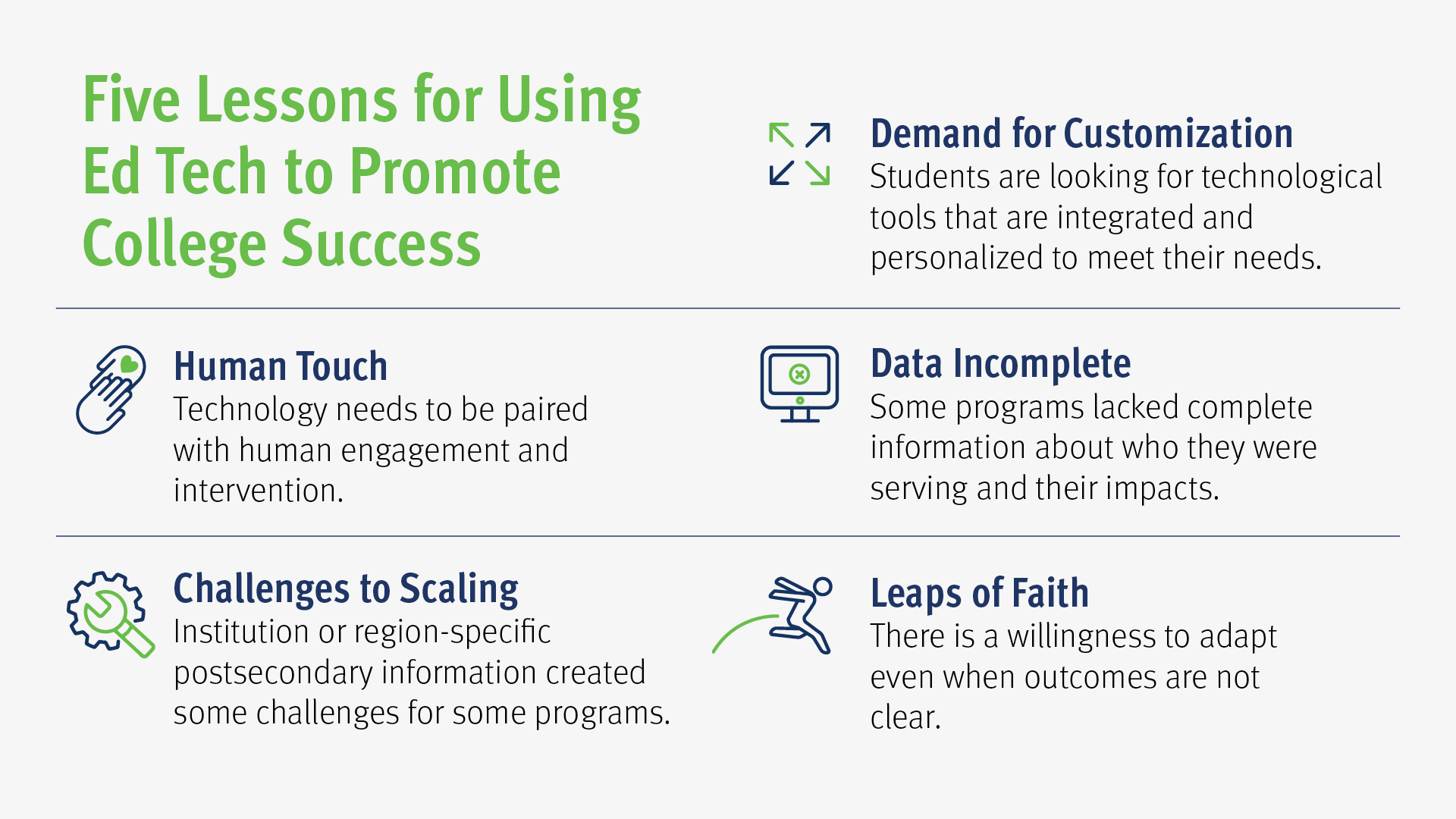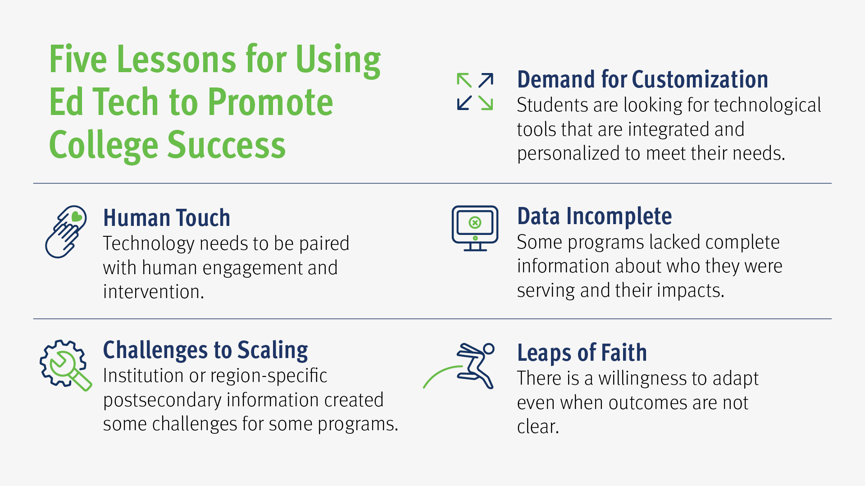5 Lessons for Using Ed Tech to Promote College Success
October 08, 2020
By Loraine Park, Manager, Learning and Impact
As a new school year begins amid a pandemic, higher education institutions are being challenged to pivot in ways that could not have been imagined before COVID-19. For many schools, this means starting the fall in virtual or hybrid learning environments, which many fear will deepen already existing inequities. Studies have shown that college completion and degree attainment can translate into lifetime earning power, but even before the pandemic, a college degree was out of reach for many students from underserved backgrounds.
Now more than ever, colleges will need creative solutions to reach out to and support their students. Ed tech holds potential to be a part of these creative solutions.
Since its inception, ECMC Foundation has provided grants and investments to ed tech programs that support students towards completing their postsecondary degrees. We conducted an evaluation of six completed grants that implemented student-facing educational technologies. The evaluation aimed to: (1) describe the programs including similarities and differences across their technologies; (2) assess the impacts of these programs; and (3) understand the successes, challenges and lessons learned across these programs.
While this evaluation was completed before COVID-19 swept across campuses around the country, the findings provide useful insight as the postsecondary community leans even more on technological tools to deliver instruction and student services.
Here is what we learned.
The six funded programs served more than 175,000 students and used a variety of technologies and tools to strengthen opportunities within college access and success. The evaluation identified five lessons that have potential to inform organizations and funders working in this space.


Human Touch: Technology needs to be paired with human engagement and intervention.
Ed tech solutions can help students along their learning journeys, but they alone are not sufficient. For example, some grantees found that while chatbots were able to address many questions that students had some questions need to be elevated to mentors or other staff.
Demand for Customization: Students are looking for technological tools that are integrated and personalized to meet their needs.
Many students are digital natives and have had access to the internet and computers from an early age. Engaging students, who are the end-users, early and often to solicit input about their desire for such programs and tools as well as features and design elements that are important to them is critical.
Challenges to Scaling: Institution or region-specific postsecondary information created some challenges for some programs.
Grantees addressed the importance of providing the right information at the right time. Given that postsecondary information is often localized to a state, region or institution, this led to scaling challenges for some programs. For example, one program that implemented a program at one institution found that it was time consuming and challenging to gather relevant information for one institution. As they were thinking about the next iteration of their program, they were challenged to think through how they could do this more systematically across multiple institutions.
Data Incomplete: Some programs lacked complete information about who they were serving and their impacts.
While these programs regularly mine the data embedded within their technologies, they sometimes had incomplete information. Some programs wanted to have low thresholds to participation, which meant compromising some information about who they serve. Other grantees struggled to establish data sharing agreements with their partner institutions to access data about college persistence and success. While evaluating the outcomes associated with programs is challenging, it is critical to assess impact if the ultimate goal of the program is to support students towards college completion.
Leaps of Faith: There is a willingness to adapt even when outcomes are not clear.
Despite limited knowledge about the effectiveness of services, programs continued to evolve and adapt. At the time of this evaluation, four of the six grantees had made programmatic adjustments and were in the process of either implementing a redesigned program model or seeking funding to do so. Continuing to assess implementation and effectiveness of revised programs models will be critical.
